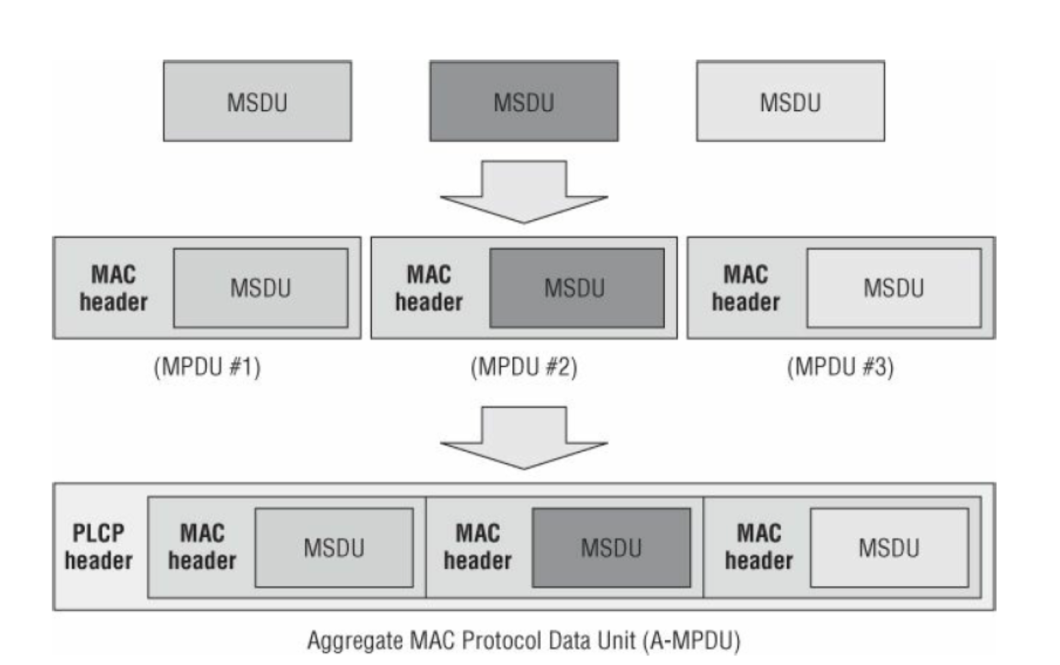Frame Aggregation was introduced in 802.11n which has played a good role in increasing the overall throughput for the clients. The maximum frame transmission size for the earlier standard was 2,304 bytes. 802.11n has contributed to the increase in the throughput by combining frames into one larger frame. This helps in reducing the overhead as well.
There are two different methods to aggregate the frames:
A-MSDU (Aggregated MAC Service Data Unit)
A-MPDU (Aggregated MAC Protocol Data Unit)
A-MSDU:
This can reach a length of 7,935 bytes. In A-MSDU, the smaller frames are aggregated which are headed to the same destination and are of the same Quality of Service (QoS) into a single large frame called the aggregated frame. This can bring down the overhead but also makes each frame transmission susceptible to receive errors due to RF issue like noise and interference. For a larger frame to be beneficial, we need to have an environment of high SNR.

A-MPDU:
This can reach a length of 65,535 bytes as compared to the standard 802.11 frame of 2,304 bytes. A-MPDU differs in a way that it allows a series of individual frames to be sent one after the other in a single access to the medium. Each MPDU is sent with its header and thus it is less efficient than A-MSDU. However, if there is an error detected in a PDU frame, the entire A-MPDU does not need to be transmitted again, only that particular MPDU can be transmitted (the one with the error in it). This makes A-MPDU less susceptible to noise than the A-MSDU.

In almost all the vendors products this setting is configurable and the environment should be well understood before enabling either one.
.
LikeLike